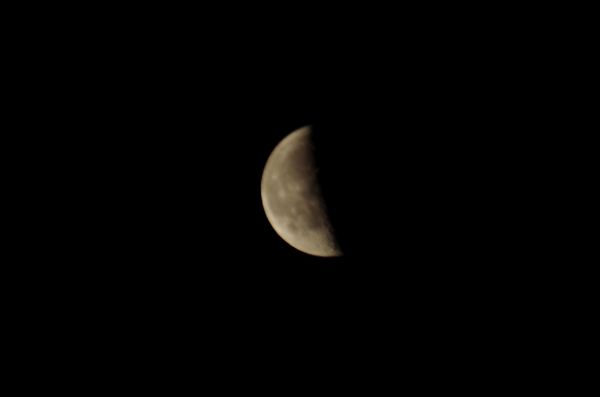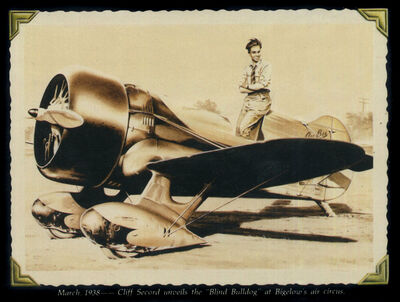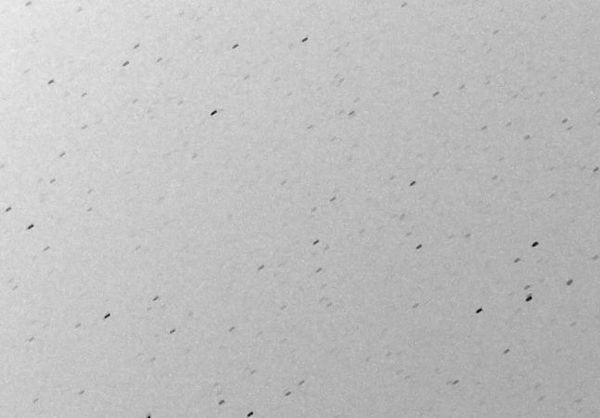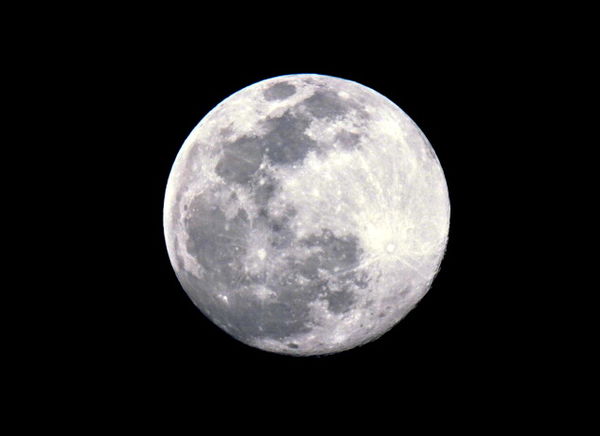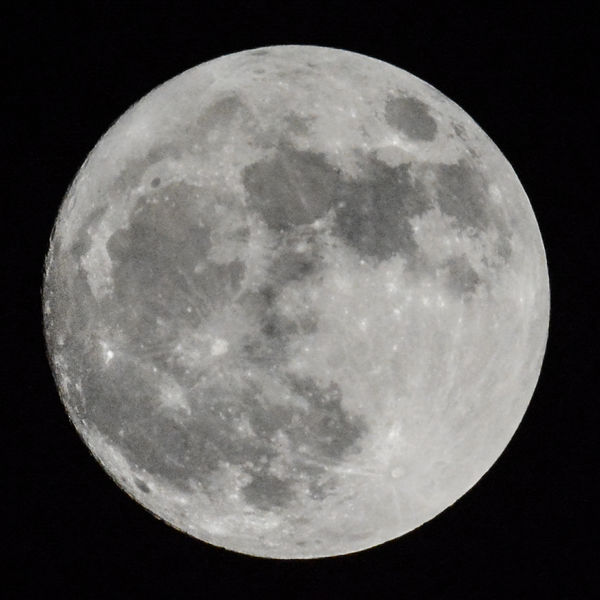I learned something this morning at 0 dark 30
Apr 15, 2020 08:05:13 #
I was all set to try and get a shot of the conjunction of the Moon, Jupiter, Saturn, and Mars this morning. I was hoping my 600mm reflex lens would have enough FOV to get them all in. Nope, sorry, couldn't get even one of the planets in with the moon. I shot a few pics of the moon and came inside to see if I got a keeper or two. I was shooting at ISO 1600 at 1/60 and the fixed aperture of the lens, f8. Nope, the highlights were all blown. Went back out again and started increasing the shutter speed. Came back inside, connected to the computer and started reviewing this latest group of shots. To my surprise, I didn't start getting the highlight details until I reached 1/640th. I was hoping that such a high shutter speed would kill any camera shake, and it may have, but the best shot, below, was either out of focus (I was using the distance marks on the lens as the focusing ring will go quite a bit past the distance mark for infinity) or still too much camera shake shooting hand held.
The weather forecast is for clear skies again tomorrow morning. I'll set the alarm for 5 am again and put the camera on my tripod this time and adjust the focus ever so slightly between shots and hope I can get the lens in focus this time. Once I can get the focus I'll try and get a shot of Jupiter just to see what the lens will do at a distance of 500,000,000 miles.
Like I said in the title, I learned something.
The weather forecast is for clear skies again tomorrow morning. I'll set the alarm for 5 am again and put the camera on my tripod this time and adjust the focus ever so slightly between shots and hope I can get the lens in focus this time. Once I can get the focus I'll try and get a shot of Jupiter just to see what the lens will do at a distance of 500,000,000 miles.
Like I said in the title, I learned something.
Apr 15, 2020 08:32:18 #
lsaguy wrote:
I was all set to try and get a shot of the conjunc... (show quote)
the moon is bright and moving faster than you think. May I suggest you start at F 5.6 ISO 400 and 1/250 turn off auto focus and use manual focus to get the best look. Also, a tripod is a really good plan even at this shutter speed.
Apr 15, 2020 08:36:10 #
First, turn off auto focus so that the camera do not re-focus when you take the shot. On a tripod, frame your shot then use the live view & live view zoom to zoom-in and focus the camera. Don't worry, the image will be as framed, you only zoomed with the live view, not with the lens. Set a delay of at least 3 seconds so that you give the camera time to settle down and stop moving when you press the shutter.
View you shot and adjust as necessary after each take.
Have fun!!!
View you shot and adjust as necessary after each take.
Have fun!!!
Apr 15, 2020 08:43:47 #
...your ISO may be too high...try between 400 and 800...my ISO for the crescent moon is usually about 400...and for the full moon it’s 100...
Apr 15, 2020 08:48:06 #
If you're shooting for Jupiter, auto focus won't do anything for you. Auto focus needs an extended object and Jupiter will be little more than a few pixels across.
Try live view, expansion of the image, and manual focus. If you can't see (or find) Jupiter in live view, focus on the moon, then recenter to Jupiter.
The moon is much brighter than you think it is. It's fully lit by the sun and the reflectivity is around 6%. Planets are also fairly bright but it's hard to tell because they're not much larger than stars in an image, even at 600mm focal length. If you can get centered on Jupiter, take a wide range of exposures. Note that when I used a 70mm focal length to take photos of Orion many years ago, I could see star trails from the earth's motion in exposures longer than 10 seconds. A 600mm focal length will reduce that time.
Try live view, expansion of the image, and manual focus. If you can't see (or find) Jupiter in live view, focus on the moon, then recenter to Jupiter.
The moon is much brighter than you think it is. It's fully lit by the sun and the reflectivity is around 6%. Planets are also fairly bright but it's hard to tell because they're not much larger than stars in an image, even at 600mm focal length. If you can get centered on Jupiter, take a wide range of exposures. Note that when I used a 70mm focal length to take photos of Orion many years ago, I could see star trails from the earth's motion in exposures longer than 10 seconds. A 600mm focal length will reduce that time.
Apr 15, 2020 08:50:46 #
One thing to keep in mind is you're shooting the sun's light reflecting off the moon not the dark sky. Meter for the bright light & adjust from there. Wallen's comment about live view & JohnM's comment about manual focus are spot on. I usually start at about ISO 200 & f/6.3, 1/250 with my Tamron 150-600. Certainly agree with Wallen on using a shutter release delay to help get sharper pictures.
Apr 15, 2020 09:06:50 #
It seems my mention of the reflex lens was either too subtle or most people don't know that a reflex lens has a fixed aperture of f8 and is fully manual focus. I've seen a Sigma 1000mm lens on KEH that has the aperture fixed at f11, though, so there is room for confusion I guess.
So, to be clear, I was shooting in full manual with a Sigma 600mm mirror reflex lens on my Pentax K50 with the blown aperture solenoid. No aperture, no problem!
I may be a very inexperienced photographer but even I know that no lens is going to autofocus at a 1/2 billion (thousand million for the Brits among us) miles. :-}
Rick
So, to be clear, I was shooting in full manual with a Sigma 600mm mirror reflex lens on my Pentax K50 with the blown aperture solenoid. No aperture, no problem!
I may be a very inexperienced photographer but even I know that no lens is going to autofocus at a 1/2 billion (thousand million for the Brits among us) miles. :-}
Rick
Apr 15, 2020 09:31:20 #
Reflex or catadioptric lens also known as a mirror lens is basically a modified reflecting telescope. Apertures can vary like Samyang has Reflex f/6.3 300mm ED UMC CS and if memory serves me right, the Minolta 500mm f/8 mirror lens is auto-focus. So basically i have no concrete idea of the specific lens you are using and its full capability, only what it is.
Hence the suggestions are general and encompassing normal good practices for low light & telephoto lens use.
Thanks for clarifying. It seems that you got things all figured out and require no help at all.
That being the case, i guess you need to have your lens fixed or replaced as it does not focus well.
Hence the suggestions are general and encompassing normal good practices for low light & telephoto lens use.
Thanks for clarifying. It seems that you got things all figured out and require no help at all.
That being the case, i guess you need to have your lens fixed or replaced as it does not focus well.
Apr 15, 2020 10:30:36 #
juan_uy
Loc: Uruguay
lsaguy wrote:
It seems my mention of the reflex lens was either ... (show quote)
Rick, I think in your first post missed the word "mirror" that would be key for the rest to catch it.
I understood cause I have similar Nikon 500mm lens, fixed at f/8 also.
I have tried it a couple times with the moon and although I got better results than yours, don't expect tack sharp pictures. At least with mine, it always has some softness.
But still room to test/improve on my side, will keep in mind this thread to check for all the tips (although I think I was using most of them already).
Good luck on your next attempt!
Apr 15, 2020 14:30:38 #
Like a couple other folks, I missed the mirror lens as well. I have a 500 f/6.3 Samyang mirror lens I'll have to pull out & see how sharp it is on my A7R3. Will post my results with exposure settings tonight or tomorrow.
Apr 15, 2020 22:37:23 #
No moon shooting for me tonight. This is a shot from last month. ISO 400, f/6.3 1/800. Taken with my Tamron 150-600 lens wide open mounted on a tripod. Cropped to about 1/4 of the original frame.
Apr 16, 2020 06:00:28 #
I have one of the original Nikon 500mm mirror lenses (big, heavy) with f/8 fixed aperture. I have tried several times to photograph the Moon with that lens, but it has a very difficult focus adjustment (stiff) and I have a hard time getting it in focus. The best I've ever done was back in July 2014 (this image has not been post-processed). It was taken with a D7000 camera at ISO 1600 and 1/8000 sec.
I tried again in November 2016 and got the second image. This was with made with a D7100 at ISO 3200 and 1/8000 sec.
Both were done without a tripod, but braced on a car roof.
I tried again in November 2016 and got the second image. This was with made with a D7100 at ISO 3200 and 1/8000 sec.
Both were done without a tripod, but braced on a car roof.
Apr 16, 2020 07:48:12 #
billnikon
Loc: Pennsylvania/Ohio/Florida/Maui/Oregon/Vermont
lsaguy wrote:
I was all set to try and get a shot of the conjunc... (show quote)
Basic exposure for the moon is, 1/iso at F16. So, if your iso is say 400, then your BASIC exposure if 1/400 sec. at f16. If your iso is 800, then your BASIC exposure is 1/800 sec. at f16, and so on, and so forth.
Apr 16, 2020 08:36:17 #
Apr 16, 2020 08:43:08 #
juan_uy
Loc: Uruguay
David in Dallas wrote:
I have one of the original Nikon 500mm mirror lens... (show quote)
Those look quite similar to the results I got with the Nikon 500mm mirror lens.
I used a tripod some time, but results weren't greater.
As I said before, I still have some things to try next time. Let's see :)
If you want to reply, then register here. Registration is free and your account is created instantly, so you can post right away.

